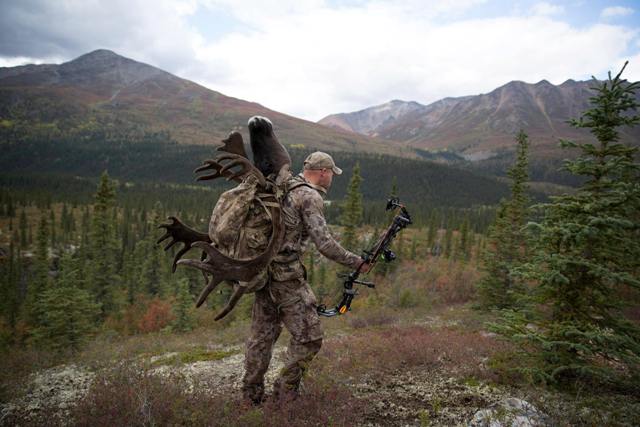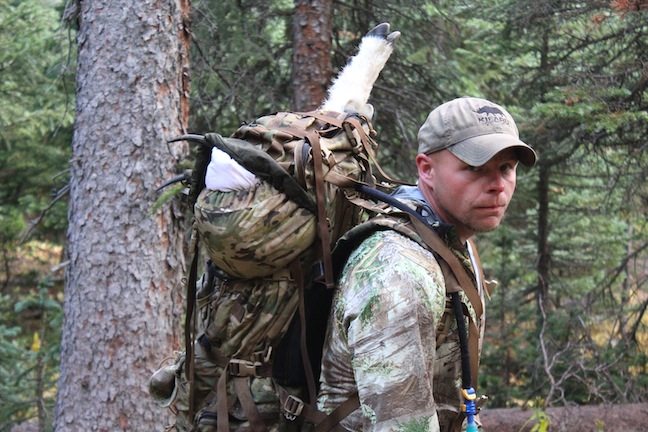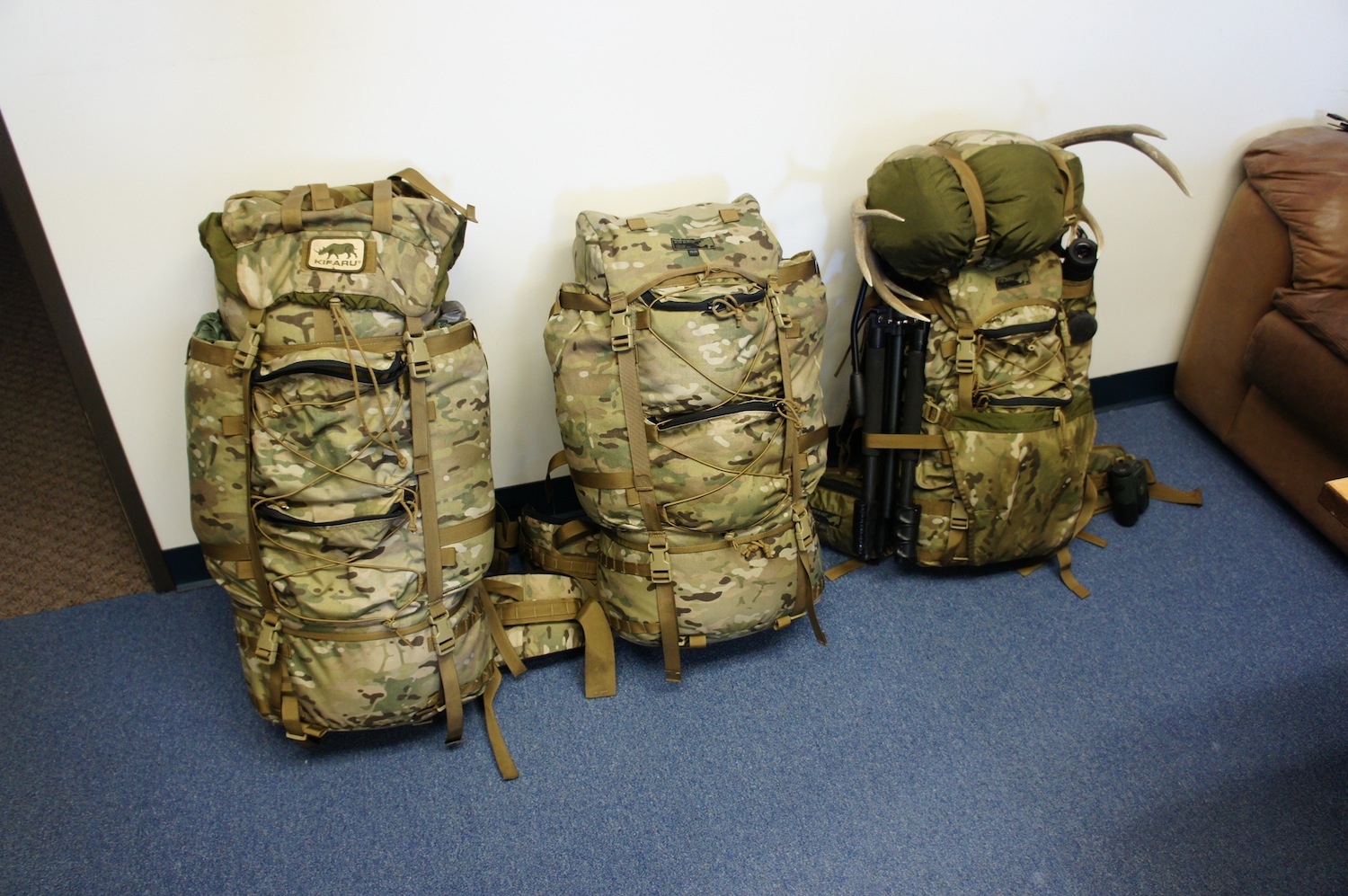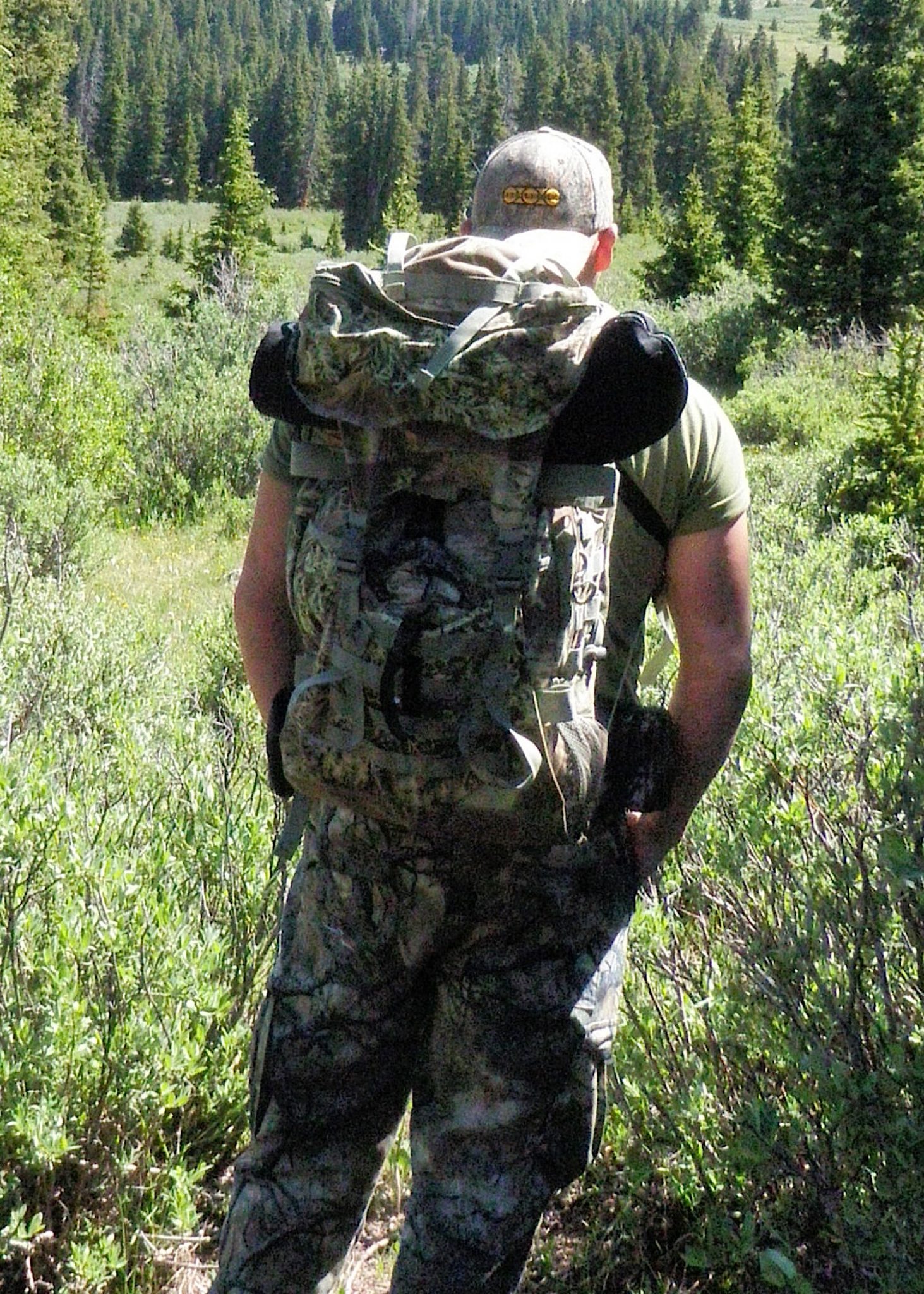
Buying A Backpack A-Z
By Aron Snyder, Rokslide Prostaff
It’s that time of year again and all the hunting forums seem to get overloaded with “what pack do I need for my upcoming hunt, “ so I figured it was a great time to go over the key steps in getting a pack fitted for you as well as what size of pack may be needed on your upcoming hunt.
I will be breaking this down into several sections, starting off with what I feel is the most important!
Torso length
Most hunting pack companies will avoid the words “torso length”, but it is the most important step in the ladder of backpack comfort.
Here are the steps to follow:
- Have a friend locate the bony bump at the base of your neck, where the slope of your shoulder meets your neck. This is your 7th cervical (or C7) vertebra. Tilt your head forward to locate it more easily.
- Using a flexible tape measure, your friend should start at that spot and measure downward along your spine.
- Place your hands on your hips so you can feel your iliac crest, which serves as the “shelf” of your pelvic girdle. (It’s the first hard thing you feel when you run your fingers down from the sides of your ribcage.) Position your hands so your thumbs are reaching behind you.
- Have your friend finish measuring at the point where the tape crosses an imaginary line drawn between your thumbs. This distance between those two points (C7 vertebra and hip bone) will be your torso length.
The reason your Torso length is so important when getting fitted for a pack is because of the load lifters. The load lifters are the straps that connect to the top of your shoulder straps and continue to the upper portion of your pack (usually that top of the frame) and attach there. The angle from the top of the shoulder straps to the connecting point on the pack should be between 15 and 45 degrees. This angle will depend on the size of the pack as well as the packs intended use, but a good rule of thumb is the heavier the pack, the steeper the angle.
The idea behind a load lifter is quite simple. When you pull on the load lifter adjustment straps, you are pulling your shoulder straps upward and off of your actual shoulders. This will transfer the weight of your pack from your shoulders to your hips, so you are not actually lifting the pack at all, but lifting the shoulder straps off of your shoulders for weight transfer. A good fitting pack should keep somewhere between 65-75% of the total pack weight transferred to your hips. If you are packing 30 pounds then this is not a big deal, but when you start hitting the 60-100 pound range, then your shoulders will not be able to take this amount of weight and the pain will set in quickly.


Now that we have your torso length and load lifters figured out, it’s time to narrow down your choices a little more. The quickest way I have found to do this is ask your self these questions:
- Will you be using your pack as a daypack, multi daypack, load hauler or a little of each?
- If you are going to be doing bivy/backpack hunts, what would be the total days you will be using it for?
- What is the heaviest weight you can physically handle and how often will you be carrying that amount?
- Is the actual weight of the pack your biggest concern or are you more focused on durability?
- Will you be packing the kitchen sink or are you an ounce counting weight weenie?
- When you kill an animal on a day hunt or multi day hunt are you and your partner going to pack it out in one trip, or are you going to make multiple trips back to the truck?
- Does the pack company have a great reputation and do they warranty their work?
Once you have answered those questions you will have the general size/volume of the pack narrowed down as well as the intended use.
The next things to look for are the much finer points. These will be “wanted” features and not so much “needed” features. They are still important, but not necessarily a deal breaker.
- Does the pack have a spotting scope and tripod compartment?
- Do you like pockets on your wait belt of do you like to attach your own?
- Can it be compressed down enough so it can be used as a daypack once you drop camp?
- Does it have a pocket for your water bladder?


These types of options are different for everyone, but it’s a good idea to get your own personal checklist of “must haves” going to help to selection process.
To this point we have covered just about everything you will need to think about before purchasing your perfect pack, but you will probably find out that you will need two packs to cover all of your hunting needs. That is normally the case and it will definitely make your decision process much easier.
Now you will want to make a list of all the options you feel your pack must have. Once that is together you are ready to start trying all the packs on that meet your requirements and see what feels the most comfortable.
After reading this far, you should be well on your way to finding the pack of your dreams! You have your torso length figured out, you have your lists ready to help make your decision.
My top 5 list is more catered to load hauling and multi-mile comfort. It’s not that hard to find a pack that feels good with a 25lb load in it, but when you start to add several days of gear or deboned elk quarters, then the lack of comfort and durability of lesser quality packs will really start to show.
So with that in mind, here is my top 5 list
- Functional Load Lifters and suspension
- Fit and comfort with heavy loads
- Extreme durability
- Compressibility
- Total pack weight
As you can see, my list is catered to multi-day Bivy trips and extreme load hauling. I generally end up packing out 8-15 animals a year and comfort and durability is a lifesaver.
To help give you guys a well rounded view, I asked my hunting partner and long time backcountry hunter what his top 5 list would be. His total load hauling capability are less then mine, and he is a “more trip less weight” type of guy. He is a bit of an ounce counting weight weenie as well, so you are getting both ends of the spectrum.
- Fit and comfort with low to moderate loads
- Total pack weight (must be under 7 lbs)
- Compressibility
- Noise
- Minimum of 5 separate compartments/pockets
As you can see, we would be looking at 2 totally different packs for the most part, but fit is obviously a top priority for any backpack hunter. Just make sure and make your check list as thorough and well thought out as possible…otherwise you may end up looking back a week or two after your purchase and thinking “man, I really wish I would have got a pack with a few hundred more cubic inches”.
So for the way that I hunt, I need a pack that is ready to rock and roll and anytime, but also be very comfortable while doing so. I also do several multi-day scouting trips where packing heavy weight is not needed, so when I’m looking for a scouting pack, my top 5 list changes dramatically. This is type of situation where things get a little more complex and you need to make sure you look at your options wisely.

If you scout and backpack frequently and you are not going to be packing more then 70-80 lbs at a time, then 1 decent size pack will probably be just fine for a scouting/backpacking and bivy pack, but if you are burning the “hunting candle” at both ends, then you will probably need 2 or more packs for all of your needs.
As far as the hunting and scouting candle goes…I’m burning both ends and the middle as well, so I need a few different packs to cover all of my bases. This is not needed to come out West and hunt, but my life revolves around wilderness adventures and having a few packs makes things a bit easier for me.
If you are looking for one pack that will work for several different applications, than something in the 3,000-4,500 cubic inch range is going to be your best option. This will give you plenty of room for a short bivy trip (5 days or less depending on gear) and it will also compress down enough to work as a day pack too.


In my case, I go big or go home when it comes to packs and I don’t mind lugging a large pack around on day hunts as long as it’s not too heavy. Most packs offered in today’s market will compress down to nothing, so it’s really a non-issue if you’re trying to get the best bang for the buck. Something in the 4,500-6-000 cubic inch range will do just about anything you can handle (up to 10 day hunt) and if you’re planning any trips in the future that require this much pack, than you may need to just get used to day hunting with something a little larger than you’re use to.
Discuss this article here


















